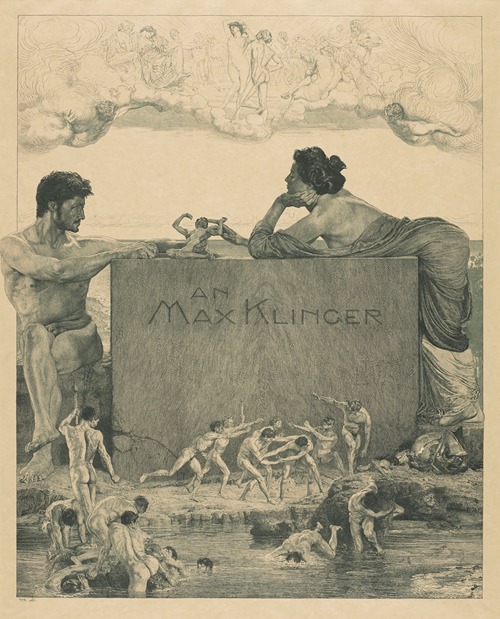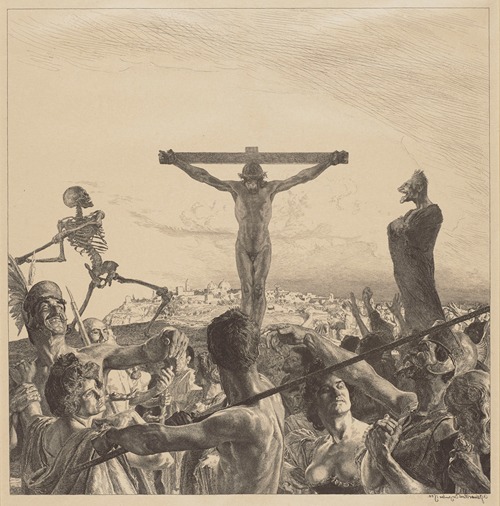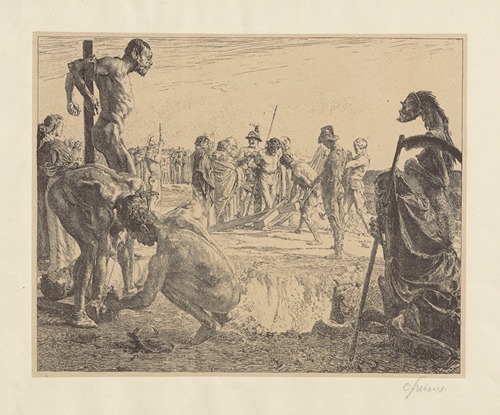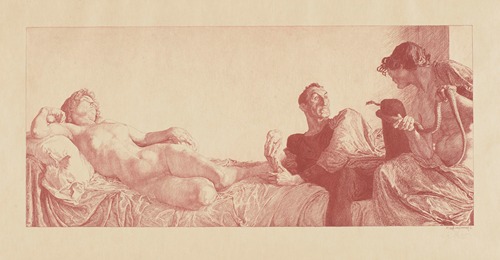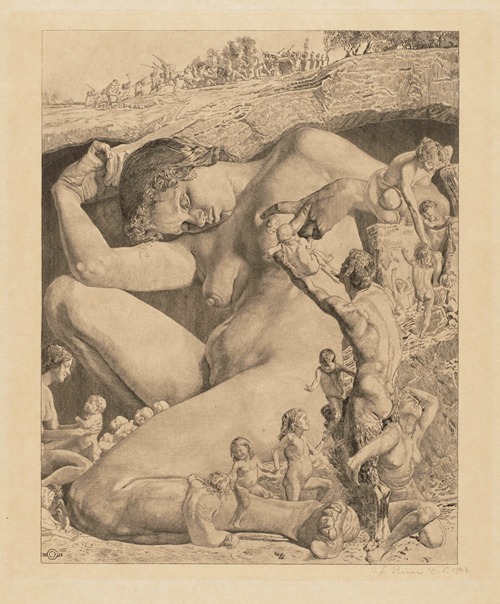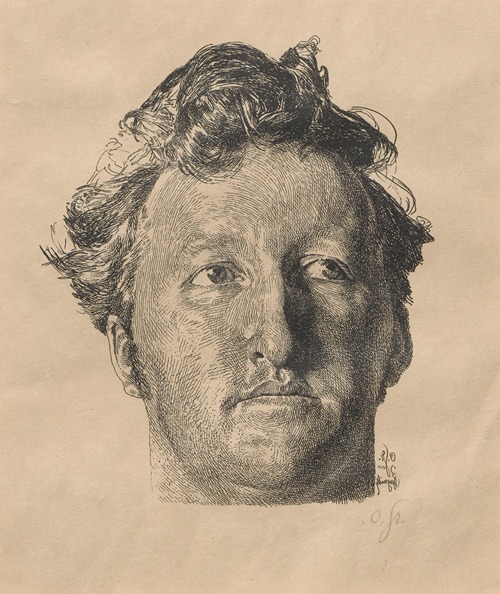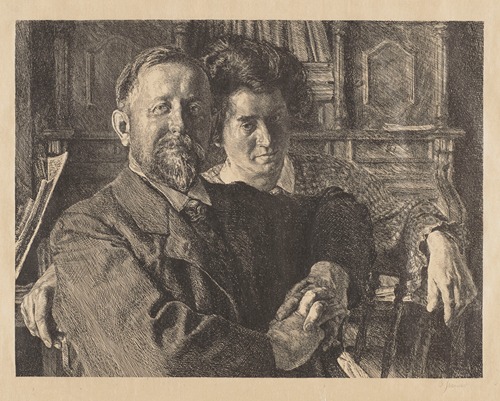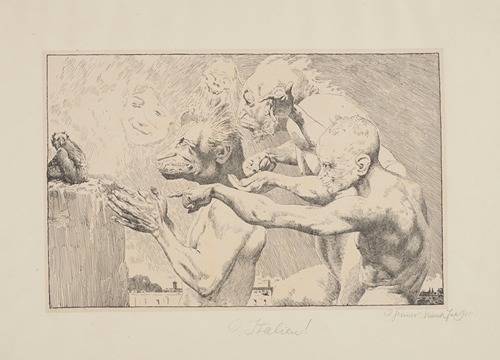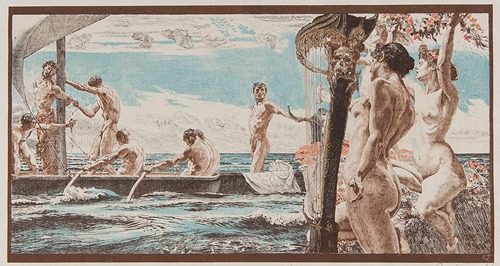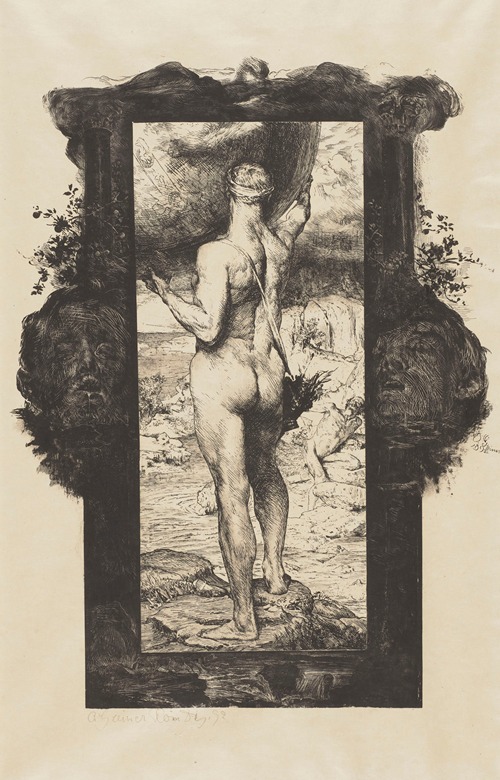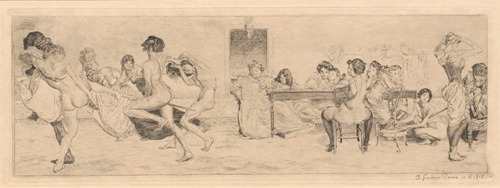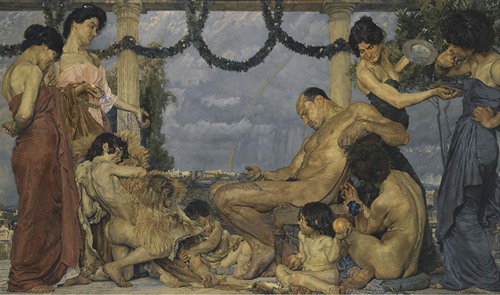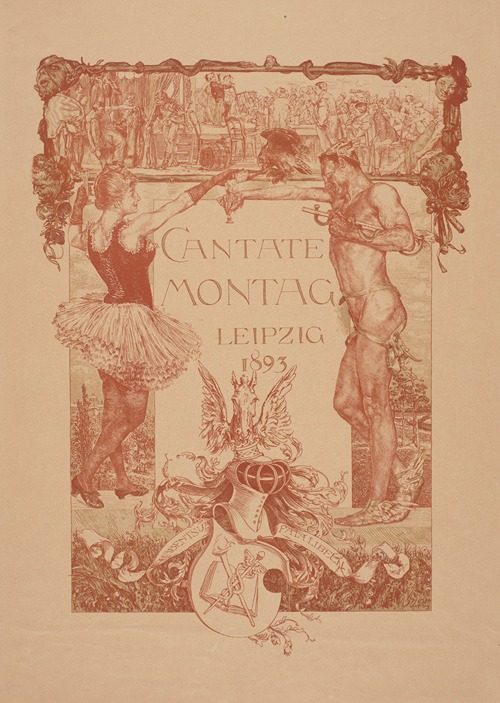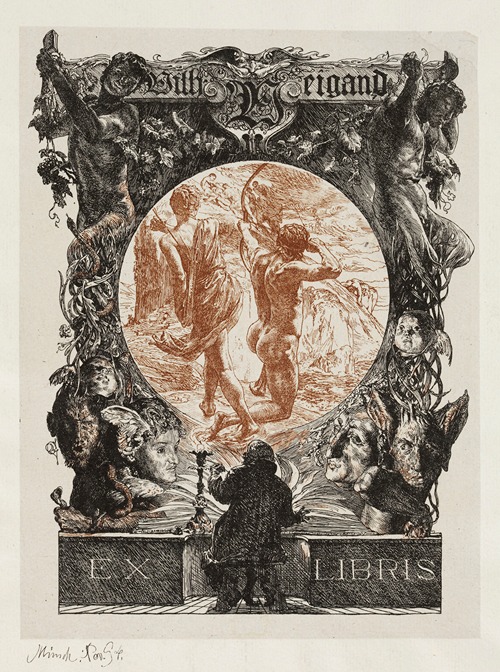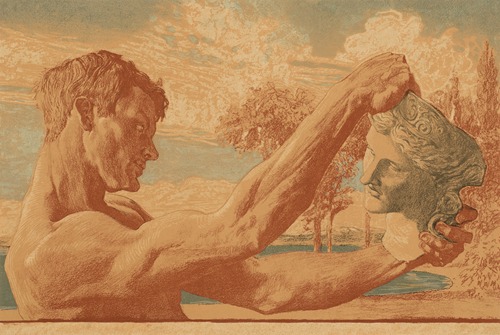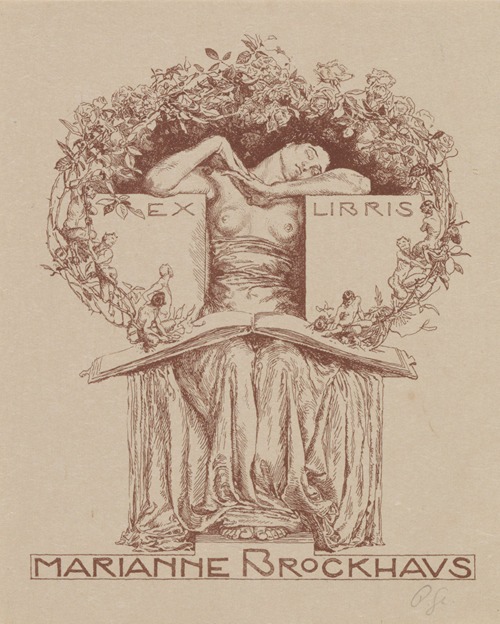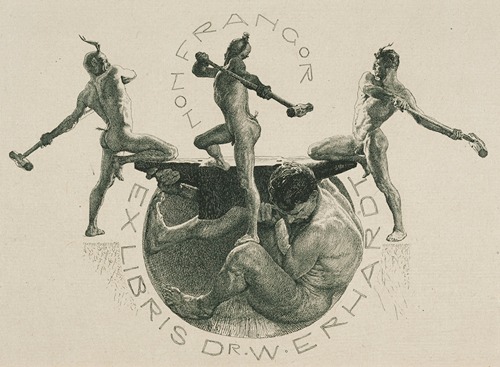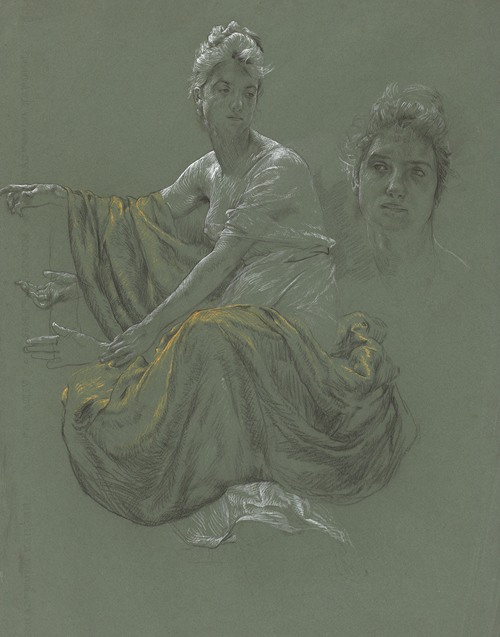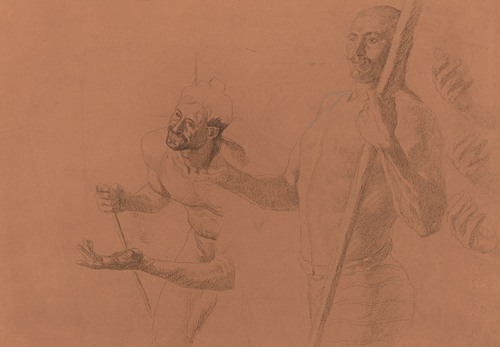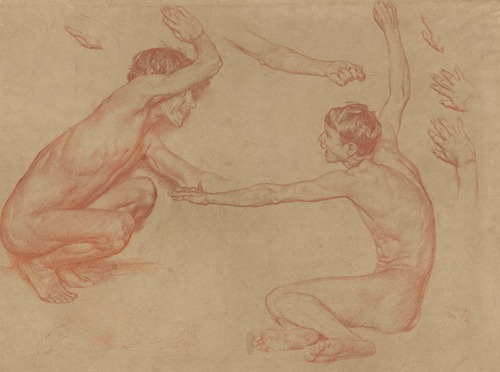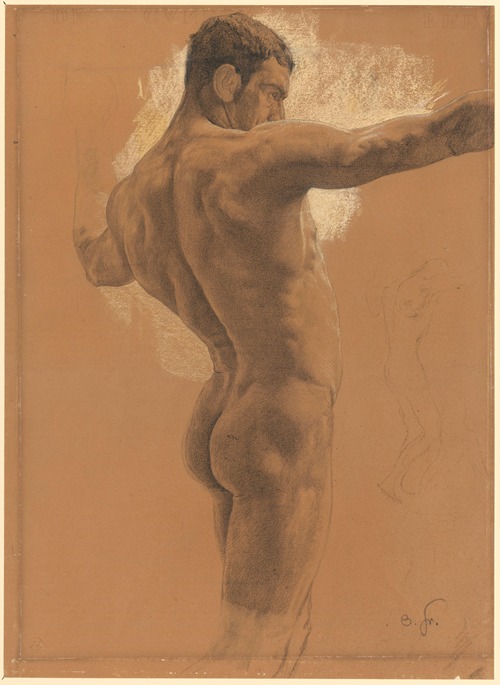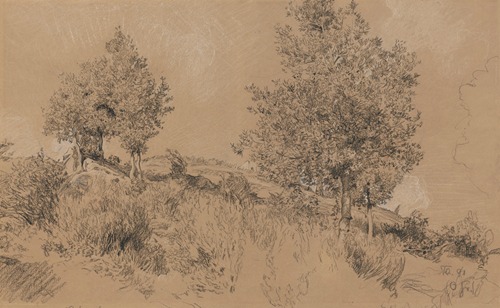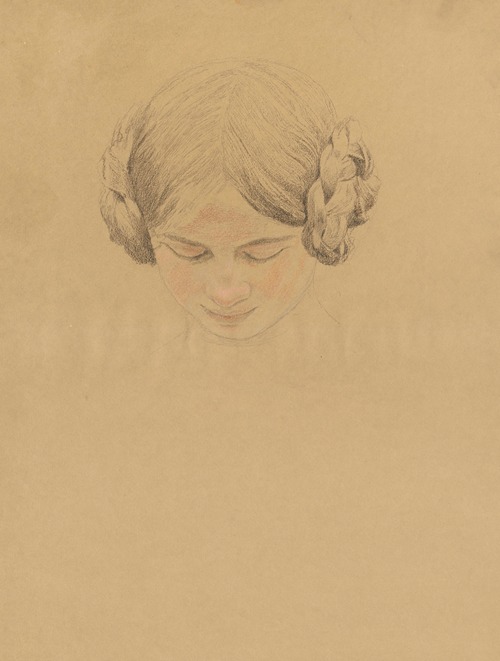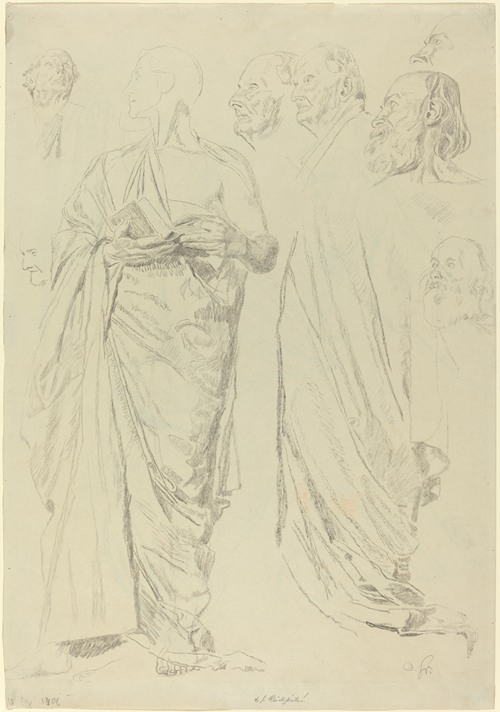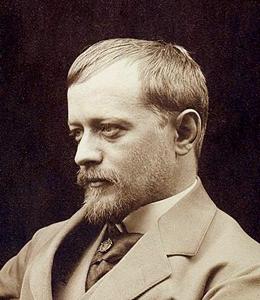

Otto Greiner
Otto Greiner began his artistic career training as a lithographer in his home town of Leipzig. In 1888 he was awarded a bursary enabling him to continue his studies at the Academy of Art in Munich. At a Munich exhibition he encountered the work of Max Klinger – already a leading figure in contemporary art. The encounter proved to be life-changing. Greiner resolved to establish contact with Klinger in Italy. A first meeting took place in Rome in 1891. A friendship quickly developed and Klinger actively encouraged his younger colleague in his work. Both artists firmly rejected the view some critics held that theirs was a teacher-pupil relationship.
Greiner quickly recognized Italy as his spiritual home. He settled in Rome permanently in 1898, moving into Klinger’s former studio near the Colosseum. He was in contact with and highly regarded by the community of German artists living and working in Rome. When Italy entered the war in 1915 he was obliged to return to Munich. He died in Munich in 1916 after contracting pneumonia.
Greiner was a printmaker and draughtsman of pre-eminent talent but he also aspired to public recognition as a painter. Many of his paintings are monumental in format and draw on mythological subjects, often depicting nudes in Italianate landscapes. Notable examples are Ulysses and the Sirens (formerly Museum der bildenden Künste, Leipzig), Hercules and Omphale (Staatsgalerie, Stuttgart) and Prometheus (National Gallery of Canada, Toronto). He produced a large body of studies, working in ink, charcoal, red chalk, gouache and coloured crayon. These drawings underline the precision of his working methods and his confident handling of materials, techniques and subjects, combined with remarkable compositional skill and virtuoso draughtsmanship. Depictions of the human figure were central to his interests – his predilection for particularly complex poses had few parallels at the time. His masterly portrait drawings and nudes are his major artistic legacy.
